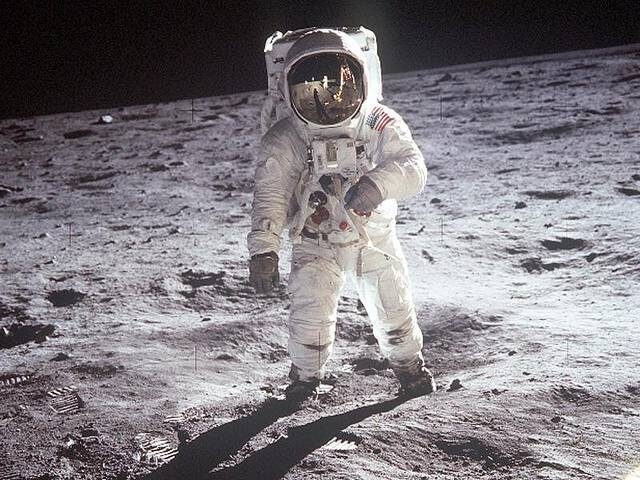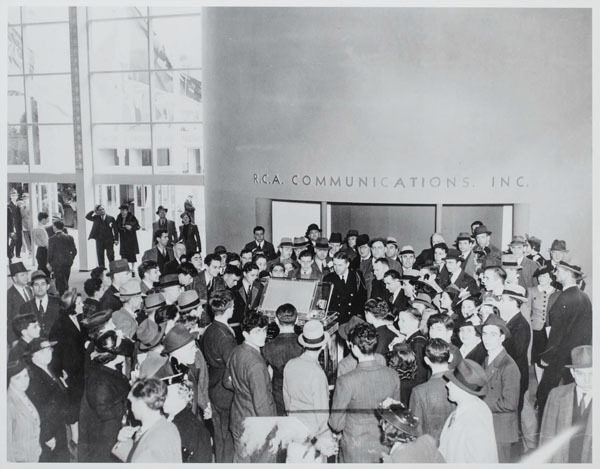The moon always shines on TV
On 20 July 1969, the words “that’s one small step..." were broadcast live to the masses, and the world knew that man had landed on the moon. The Apollo 11 mission had finally given the US the upper hand in the Space Race, more than a decade after the Soviet Union declared its intention to launch a satellite.

Image credit: NASA photo (via Flickr Creative Commons)
Five years before the 1969 moon walk, the New York World’s Fair that ran from April 1964 to October 1965 celebrated American technological and scientific progress, including spectacular buildings, monuments, amusement rides and novelties, many of which reflected the zeitgeist by focusing on space travel.
The Moon Dome, for example, was a part of the Travel and Transportation building and was a unique theatre where a 360-degree screen (the ‘spacearium-360’) encircled audiences in tilting seats as they watched a film showing a fantastical journey from an atom to the moon. The building was also built to look like the celestial body, as this Diner’s Club Magazine from 1964 describes: “This moon dome is 1/50,000th the size of the real moon, and a man walking around this moon, at a distance of one hundred feet, would have the same view as an astronaut orbiting the real moon at a distance of 1080 miles from the moon’s surface.”
And while fair goers enjoyed these lunar representations, the companies that would be behind the televisual technology on Apollo 11 were also on display. Armstrong’s famous small step was captured by one camera mounted on the lunar module and one portable one, developed by Westinghouse and the Radio Corporation of America (RCA) respectively, both of which had a significant presence at the World’s Fair. The communication technologies that they exhibited as sophisticated and world-leading (including the RCA exhibit of 250 colour TV sets) at the fair would be proved just that in 1969, while an audience of half a billion watched.

The RCA exhibit,. Images © Special Collections Research Center, Henry Madden Library, California State University, Fresno. Further reproduction prohibited without permission.
The World’s Fair foreshadowed the moon landing in many ways. It is evidence of the public fervour for space travel in the era and everything that it represented; technological prowess, exciting science and international superiority. And through its entertaining films and commercial exhibits, it drew public focus to the possibilities and importance of televisual communication. The rise of space travel as ubiquitous with American global identity has its analogue in television becoming ubiquitous in the domestic sphere, and five years before they were brought together so iconically for the moon landing, this perfect partnership proved its mettle in the 1964/5 New York World’s Fair.
For more information about World’s Fairs: A History of Global Expositions, including free trial access and price enquiries, please email us at info@amdigital.co.uk.
Recent posts

The blog highlights American Committee on Africa, module II's rich documentation of anti-apartheid activism, focusing on the National Peace Accord, global solidarity, and student-led divestment campaigns. It explores the pivotal role of universities, protests, and public education in pressuring institutions to divest from apartheid, shaping global attitudes toward social justice and reform.

This blog examines how primary sources can be used to trace the impact of young voices on society, particularly during pivotal voting reforms in the UK and the US. Explore materials that reveal insights into youth activism, intergenerational gaps, and societal perceptions, highlighting their interdisciplinary value for studying youth culture, activism, and girlhood across history.
